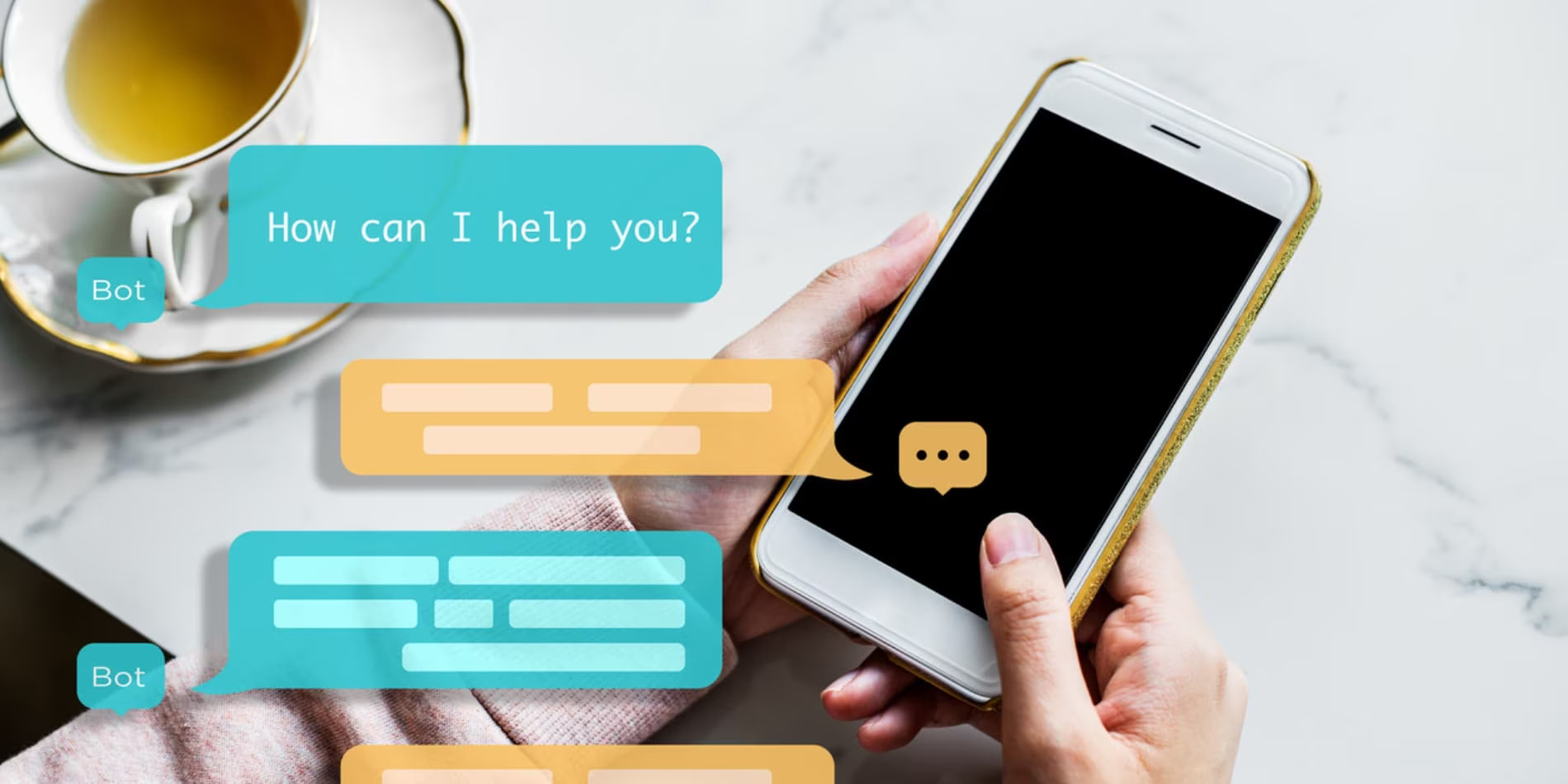What is ChatGPT?
February 27, 2023

Truly independent artificial intelligence, or AI, was once thought to be a science fiction concept. But just in the last few years, there has been unprecedented growth in the field of advanced AI.
One of the most recent major developments in artificial intelligence was the release of a platform called ChatGPT in November 2022. Developed by a company called OpenAI, this advanced chatbot instantly made headlines for its dynamic and seemingly intelligent responses to users’ prompts.
Artificial Intelligence is a cutting-edge technology that is still being researched and developed, so you might be wondering what ChatGPT is and what makes it so special. To understand ChatGPT, you must know a little bit about the broader sphere of artificial intelligence.
Defining artificial intelligence

Most people are familiar with the term artificial intelligence and its most basic concepts. But the truth is that the specific definition is fluid. It has changed much over the years in response to technological advancements, and it’s constantly evolving.
Alan Turing, best known for cracking the Nazi Enigma code during World War II, was the first to popularize a concept he called “thinking machines.” But it wasn’t until a few years later that computer scientist John McCarthy officially coined the term “artificial intelligence.”
McCarthy defined artificial intelligence as “the science and engineering of making intelligent machines, especially intelligent computer programs.”
That definition is still relevant these days, but such a wide and complex concept can hardly be summed up in a single sentence. That’s why, in the 1990s, Stuart Russell and Peter Norvig published the seminal AI textbook, “Artificial Intelligence: A Modern Approach.”
In their book, Russell and Norvig broke down AI development into two different approaches. First is the human approach, which involves developing machines that think and act like humans. On the other hand, the ideological approach to AI involves developing machines that think and act rationally.
Types of AI
You can classify AI into different types, based on either functionalities or capabilities.
CAPABILITY-BASED
Identifying AI based on capabilities gives you an idea of how powerful or “intelligent” it is. For example:
NARROW OR WEAK AI
Narrow or “weak” AI is made for performing specific tasks. While they give the illusion of autonomy, they will respond to an input in the exact same way every time. You’ve probably encountered all sorts of narrow AI solutions in your everyday life: Apple’s Siri, Amazon’s Alexa, self-driving cars, and automated chat systems are an example of this ideological approach to AI.
GENERAL OR STRONG AI
General or “strong” AI is still a theoretical concept and does not yet exist. It refers to an AI that thinks and acts in a way that’s indistinguishable from humans. That means it can take knowledge from previous operations and apply it in new contexts. This would be an example of the human approach to AI.
FUNCTIONALITY-BASED
Another way to describe types of AI is by functionality:
REACTIVE
Purely reactive machines do not utilize memory to store data about past operations. They can only react to a specific type of input, and only work with the data they’re presented with.
LIMITED MEMORY
Limited memory AI is a step up from reactive AI because it has the capability to store data, access it, and generate an output based on it. It should be noted that this is not a form of general or “strong” AI because its memory is limited and can only be applied to specific tasks.
THEORY OF MIND
Theory of mind AI is an example of General or “strong” AI because it does not yet exist. This type of AI can recognize human emotions and social cues, as well as alter its behaviors based on external stimuli.
SELF-AWARE
Another example of General or “strong” AI is self-awareness, meaning the machine is capable of reflection, and even emotions. If machine self-awareness is possible, we’re a long ways away from it.
Artificial intelligence is a huge, complex field. It would be impossible to cover it all in a few short paragraphs. While this explanation only scratches the surface, it should be enough to learn more about ChatGPT.
What ChatGPT can do

ChatGPT is an AI chatbot. That means a user can enter a text prompt and receive an intelligently-generated output, allowing for a back-and-forth conversation. While similar platforms have existed for a few years now, what makes ChatGPT so impressive is its detail and versatility.
USES
As the name suggests, ChatGPT is billed as a chat bot. That means users can engage in a conversation about a wide range of topics, such as personal hobbies, interests, or current events.
But ChatGPT’s abilities go well beyond conversation. It can generate a variety of different text-based material, like emails, advertisements, or entire stories. It even answers questions on potentially complex topics like science, technology, and history - making it helpful for completing homework or research projects.
ChatGPT can also tell jokes, suggest movies, TV shows, and books, and give advice on personal anecdotes. It can correct its own mistakes, ask follow-up questions, and often get into the finer details of a specific topic.
The tone and content of ChatGPT’s responses can be influenced by the user. For example, one can ask ChatGPT to generate responses in an upbeat, positive tone. Its response would be different than if one were to specify a cynical, negative tone.
But maybe most impressively, ChatGPT can write and debug computer code. When presented with 40 pieces of incorrect code, researchers found that ChatGPT successfully corrected 19 of them – a success rate of just under 50%.
What sets ChatGPT apart from other automated debugging methods is that programmers can follow-up with questions. This allows ChatGPT to check its work and correct any mistakes. This helped ChatGPT reach a 77% success rate.
Despite its impressive abilities, ChatGPT is still a limited memory AI system. It is unique from other chatbots because it can call on past answers to update its current output. Unfortunately, it’s limited to a single medium: text-based chat. That makes it a form of narrow or “weak” AI.
DEVELOPMENT
Developed by OpenAI, the origins of ChatGPT can be traced back to 2018, when they released the first version of their flagship platform, the Generative Pre-Trained Transformer (GPT).
A GPT is a language model, which is an AI algorithm designed to understand and generate human-like language. While there are many different types of language models, one of the most common are deep learning models. Deep learning is a process of “training” AI by giving it a massive amount of data to analyze and learn from.
OpenAI’s GPT platform is so powerful because of the unique training model they used, known as Reinforcement Learning from Human Feedback (RLHF). This method involves playing out a chatbot interaction between two humans, then feeding the transcript to the AI for analysis.
The AI recognizes patterns in the data, which it identifies and stores as parameters.
Programmers then ask the AI to generate several outputs based on these parameters. A human ranks the outputs from best to worst, then gives the ranking back to the AI. Then, the AI adjusts its parameters based on the best answer.
Parameters are the most important part of a language model. The more parameters one has, the more dynamic it is.
The first iteration of GPT had 117 million parameters. OpenAI released GPT-2 in 2019, which had 1.5 billion parameters.
Following the release of GPT 2, Microsoft made a sizable $1 million investment in OpenAI. That investment gave OpenAI the momentum needed to make advancements quickly and efficiently. Launched in 2020, the third iteration of GPT was the largest language model ever, with over 175 billion parameters.
InstructGPT, the predecessor to ChatGPT, was launched in 2022 based on GPT-3. Then, just a few months later, OpenAI officially launched ChatGPT, based on an updated GPT 3.5 model.
IMPACT
The public launch of ChatGPT made huge waves in the technology world and beyond. While some people are impressed with how far AI has come in such a short time, others are warning that a powerful, unrestricted AI could be dangerous for several reasons.
PROS FOR AI
Proponents of AI argue that it brings many benefits. AI could replace human workers in particularly dangerous jobs. An AI could also get tedious and repetitive tasks done faster than a human could. Plus, in theory, an AI is always available and working consistently around the clock.
ChatGPT specifically has a wide range of useful applications: it can automatically generate new content, like advertisements, emails or blog posts; it can review and summarize existing content, helpful for both students and teachers; it can help with translation and learning new languages; and companies can use it to provide quick, automated support to their customers.
With all that in mind, AI has the potential to make certain types of work safer, faster, and less tedious.
CONS FOR AI
But AI has its critics too. As AI platforms get larger and more powerful, the less we understand how they actually work. An AI algorithm can get so complex it becomes impossible for the developers to identify how it produces its output.
This is especially dangerous because ChatGPT often presents false information as facts, which could potentially help the spread of dangerous misinformation.
There’s also the potential for misuse. While ChatGPT has safeguards in place to prevent the generation of offensive or inflammatory content, users have found loopholes. ChatGPT could also be used by students to cheat on their assignments.
ChatGPT has other, less serious limitations. It has trouble recognizing complex structure. Its responses are often excessively long and repetitive, and occasionally completely nonsensical.
So even though ChatGPT is impressive, its important to keep those potential dangers in mind.
SUMMARY
While truly independent artificial intelligence was once something out of science fiction - and it’s still a long way away - OpenAI has brought us closer than ever before with ChatGPT. Right now, ChatGPT is free to use, so you can try it out for yourself, like millions of people already have.






